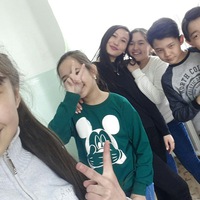
Возьмите два кусочка льда, оберните один из них черную другой белую ткань, положите на блюдца и
направился на них свет электрической лампы. Под какой тканью лёд растает быстрее, почему? Придумайте опыты на поглащение и изучение энергии. 0
0
 0
0
Ответы на вопрос
 Внимание! Ответы на вопросы дают живые люди. Они могут содержать ошибочную информацию, заблуждения, а также ответы могут быть сгенерированы нейросетями. Будьте внимательны. Если вы уверены, что ответ неверный, нажмите кнопку "Пожаловаться" под ответом.
Внимание! Ответы на вопросы дают живые люди. Они могут содержать ошибочную информацию, заблуждения, а также ответы могут быть сгенерированы нейросетями. Будьте внимательны. Если вы уверены, что ответ неверный, нажмите кнопку "Пожаловаться" под ответом.

The Experiment with Ice and Fabric
To determine which fabric allows ice to melt faster when exposed to light from an electric lamp, we can conduct a simple experiment. The experiment involves taking two pieces of ice, wrapping one of them in black fabric and the other in white fabric, placing them on separate plates, and directing the light from an electric lamp onto the plates. By observing the rate at which the ice melts under each fabric, we can determine which fabric allows the ice to melt faster.
Hypothesis and Explanation
Hypothesis: The ice wrapped in the black fabric will melt faster than the ice wrapped in the white fabric.
Explanation: The color of an object affects how it absorbs and reflects light. Black objects absorb more light and convert it into heat energy, while white objects reflect more light. In this experiment, the black fabric will absorb more light from the electric lamp, converting it into heat energy. This additional heat energy will accelerate the melting process of the ice wrapped in the black fabric, causing it to melt faster compared to the ice wrapped in the white fabric.
Conducting the Experiment
To conduct the experiment, follow these steps:
1. Take two equal-sized pieces of ice. 2. Wrap one piece of ice in black fabric and the other piece in white fabric. 3. Place the ice on separate plates. 4. Position an electric lamp so that the light is directed onto the plates with the ice. 5. Observe and record the rate at which the ice melts under each fabric. 6. Compare the results to determine which fabric allows the ice to melt faster.
Additional Experiments on Energy Absorption and Study
If you are interested in conducting experiments related to energy absorption and study, here are a few ideas:
1. Comparing the Absorption of Different Colors: Conduct an experiment to compare the absorption of light by objects of different colors. Take objects of various colors (e.g., black, white, red, blue) and expose them to a light source. Measure the temperature change of each object to determine which color absorbs the most energy.
2. Investigating Insulation Materials: Test the insulating properties of different materials. Take containers filled with hot water and wrap them in various materials, such as foam, cotton, aluminum foil, and plastic. Measure the temperature change of the water over time to determine which material provides the best insulation.
3. Exploring Solar Energy: Build a simple solar cooker using reflective materials, such as aluminum foil or mirrors. Place different types of food in the cooker and measure the time it takes for the food to cook. Compare the cooking times to understand how different materials and designs affect the absorption and utilization of solar energy.
Remember to always take appropriate safety precautions when conducting experiments involving heat, electricity, or other potentially hazardous materials.
I hope these suggestions help you explore the fascinating world of energy absorption and study. Let me know if you have any further questions!
 0
0
 0
0
Топ вопросов за вчера в категории Химия
Последние заданные вопросы в категории Химия
-
Математика
-
Литература
-
Алгебра
-
Русский язык
-
Геометрия
-
Английский язык
-
Химия
-
Физика
-
Биология
-
Другие предметы
-
История
-
Обществознание
-
Окружающий мир
-
География
-
Українська мова
-
Информатика
-
Українська література
-
Қазақ тiлi
-
Экономика
-
Музыка
-
Право
-
Беларуская мова
-
Французский язык
-
Немецкий язык
-
МХК
-
ОБЖ
-
Психология
-
Физкультура и спорт
-
Астрономия
-
Кыргыз тили
-
Оʻzbek tili



















